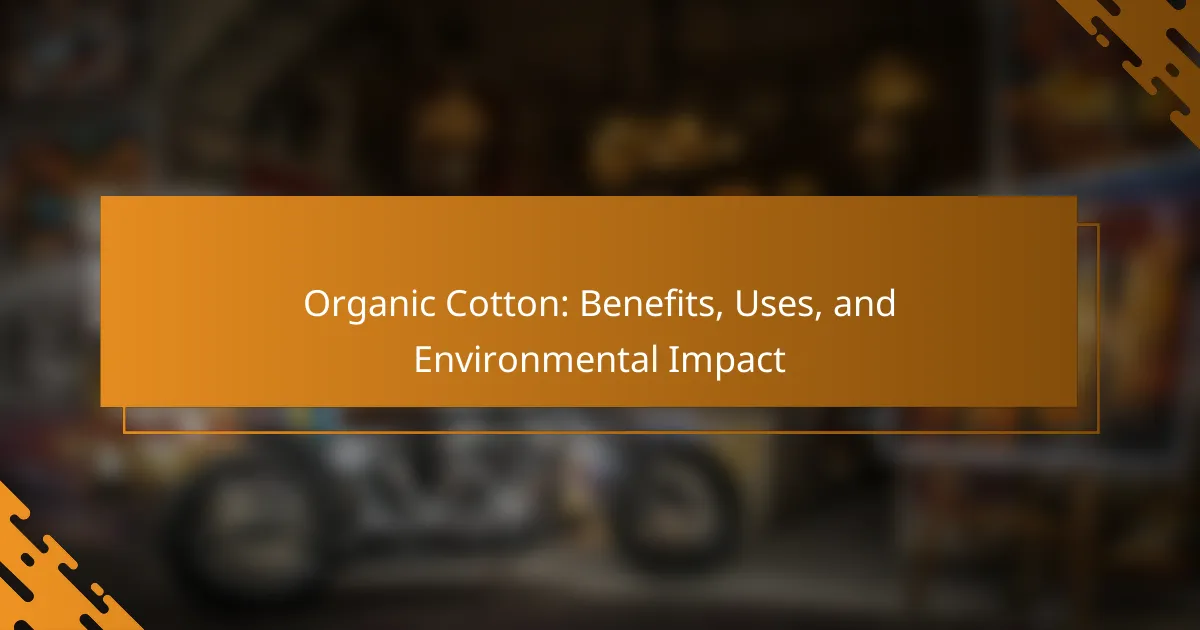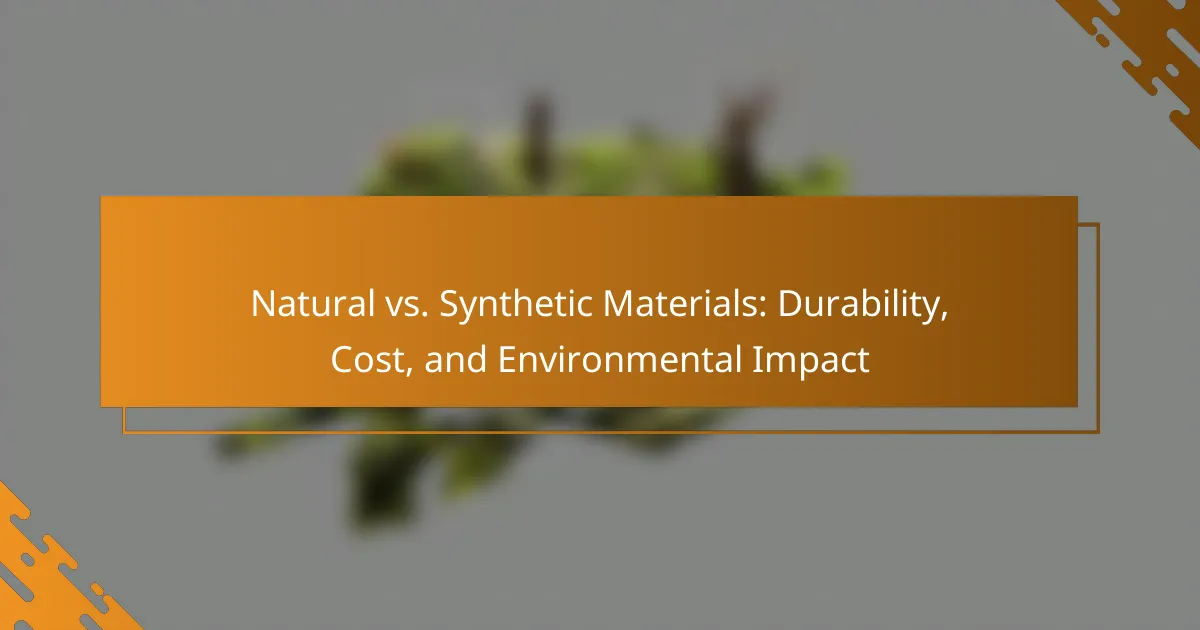When comparing bamboo and recycled plastic, both materials present unique advantages in terms of sustainability, cost, and versatility. Bamboo is celebrated for its biodegradability and rapid renewability, while recycled plastic plays a vital role in waste reduction and energy conservation. Although bamboo may have a higher upfront cost, recycled plastic often appeals to budget-conscious consumers. Each material serves distinct purposes, with bamboo favored for its natural aesthetic and strength, and recycled plastic valued for its durability and weather resistance.
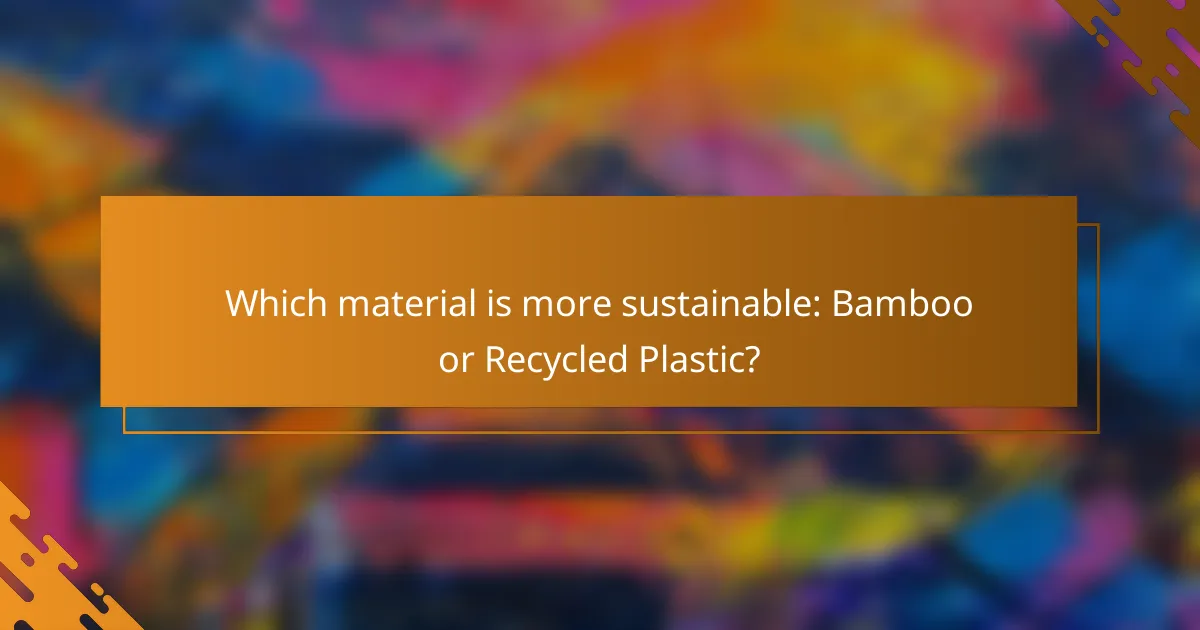
Which material is more sustainable: Bamboo or Recycled Plastic?
Bamboo is generally considered more sustainable than recycled plastic due to its biodegradability and rapid renewability. However, recycled plastic plays a crucial role in reducing waste and conserving energy, making both materials valuable in the sustainability conversation.
Bamboo is biodegradable and renewable
Bamboo is a grass that grows quickly, often reaching maturity in three to five years, making it a highly renewable resource. Once harvested, it can regrow without the need for replanting, which minimizes soil erosion and supports ecosystem health.
Being biodegradable, bamboo products break down naturally over time, returning nutrients to the soil. This contrasts sharply with traditional plastics, which can take hundreds of years to decompose, contributing to long-term environmental pollution.
Recycled plastic reduces waste and energy consumption
Recycled plastic helps divert waste from landfills and oceans, addressing the growing plastic pollution crisis. By repurposing existing materials, it reduces the need for new plastic production, which is energy-intensive and reliant on fossil fuels.
Using recycled plastic can save significant amounts of energy—often estimated at around 60-80% compared to producing new plastic. This not only conserves resources but also lowers greenhouse gas emissions, contributing positively to climate change mitigation.
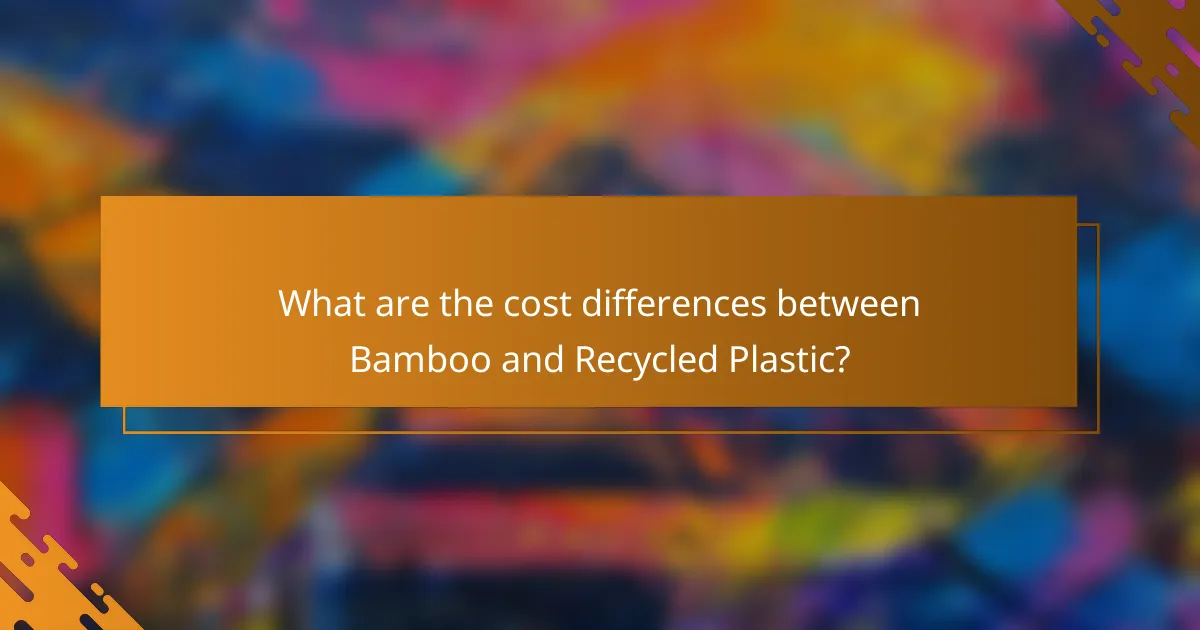
What are the cost differences between Bamboo and Recycled Plastic?
The cost differences between bamboo and recycled plastic largely depend on initial investment and long-term value. Bamboo typically has a higher upfront cost, while recycled plastic is often more budget-friendly, making it an attractive option for many consumers.
Bamboo typically has a higher initial cost
Bamboo products often come with a higher price tag due to the costs associated with sustainable harvesting and processing. This can range from 20% to 50% more than similar products made from recycled plastic. However, the durability and aesthetic appeal of bamboo can justify the investment for many buyers.
When considering bamboo, it’s essential to evaluate the long-term benefits. Bamboo is known for its strength and longevity, which can lead to lower replacement costs over time. Additionally, its natural properties make it a desirable choice for eco-conscious consumers.
Recycled plastic is often more affordable
Recycled plastic products generally have a lower initial cost, making them accessible for a wider range of budgets. Prices can vary significantly, but they are often 20% to 40% less expensive than bamboo alternatives. This affordability makes recycled plastic a popular choice for various applications, from outdoor furniture to construction materials.
While the lower cost is appealing, it’s important to consider the potential trade-offs in durability and environmental impact. Recycled plastic may not always match the aesthetic qualities of bamboo, but it offers versatility and resilience, making it suitable for many practical uses.
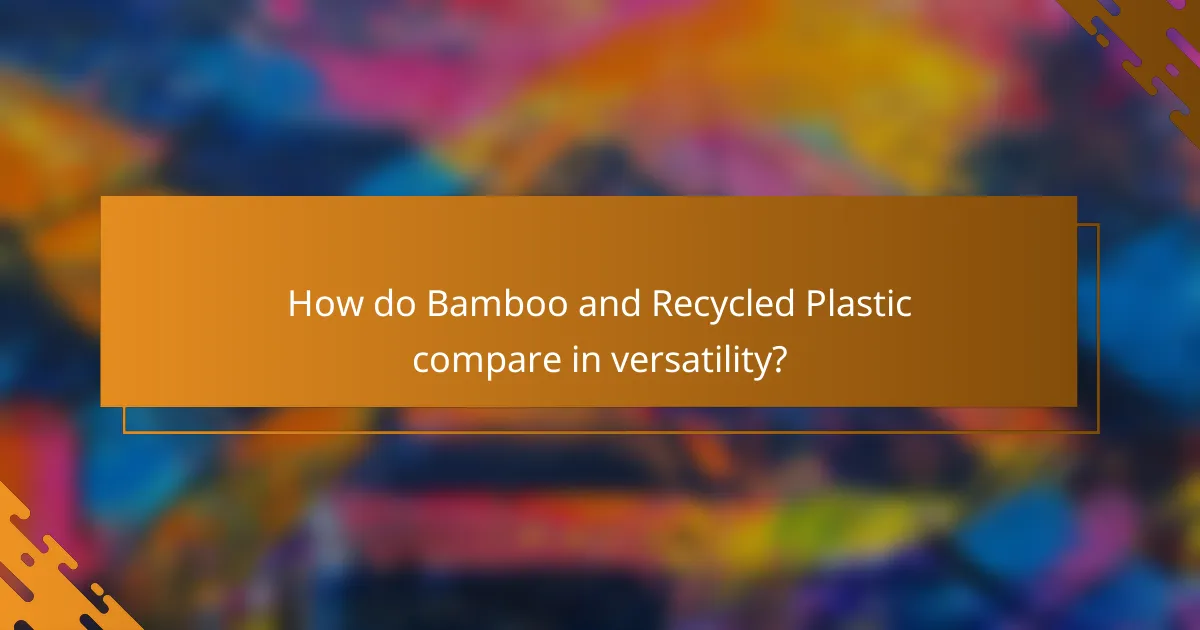
How do Bamboo and Recycled Plastic compare in versatility?
Bamboo and recycled plastic both offer significant versatility, but they serve different purposes and applications. Bamboo is often favored for its natural aesthetic and strength in furniture and textiles, while recycled plastic is commonly used in a wide range of consumer products due to its durability and weather resistance.
Bamboo is versatile for furniture and textiles
Bamboo is a popular choice for furniture and textiles because of its strength, lightweight nature, and aesthetic appeal. It can be crafted into various forms, from sturdy furniture pieces to soft fabrics, making it suitable for both indoor and outdoor use.
In furniture design, bamboo can be shaped into intricate designs while maintaining structural integrity. For textiles, bamboo fibers are often blended with other materials to enhance softness and breathability, making them ideal for clothing and home textiles.
Recycled plastic is used in various consumer products
Recycled plastic is highly versatile and is utilized in a broad spectrum of consumer products, including containers, outdoor furniture, and even clothing. Its resistance to moisture and UV rays makes it particularly suitable for outdoor applications.
Common products made from recycled plastic include bottles, bags, and packaging materials. Additionally, many manufacturers are increasingly using recycled plastic in construction materials, such as decking and insulation, contributing to sustainability efforts.

What are the environmental impacts of Bamboo and Recycled Plastic?
Bamboo and recycled plastic have distinct environmental impacts. Bamboo is a rapidly renewable resource that can benefit local ecosystems, while recycled plastic plays a crucial role in reducing landfill waste and conserving resources.
Bamboo cultivation can impact local ecosystems
Bamboo cultivation can significantly affect local ecosystems, both positively and negatively. On one hand, bamboo grows quickly and can improve soil quality and biodiversity. On the other hand, large-scale bamboo farming may lead to habitat destruction and displacement of native species if not managed sustainably.
When considering bamboo products, it’s essential to source them from certified sustainable farms. Look for certifications like the Forest Stewardship Council (FSC) to ensure that the bamboo is harvested responsibly and does not harm local wildlife.
Recycled plastic helps reduce landfill waste
Recycled plastic is a key player in minimizing landfill waste. By repurposing plastic materials, we can significantly decrease the volume of waste that ends up in landfills, which is crucial for environmental health. Recycling plastic can reduce the need for new raw materials, conserving energy and resources in the process.
To maximize the benefits of recycled plastic, consumers should look for products made from at least 30% recycled content. This supports the recycling industry and encourages manufacturers to use sustainable practices. Additionally, proper disposal and recycling of plastic items can further enhance these environmental benefits.
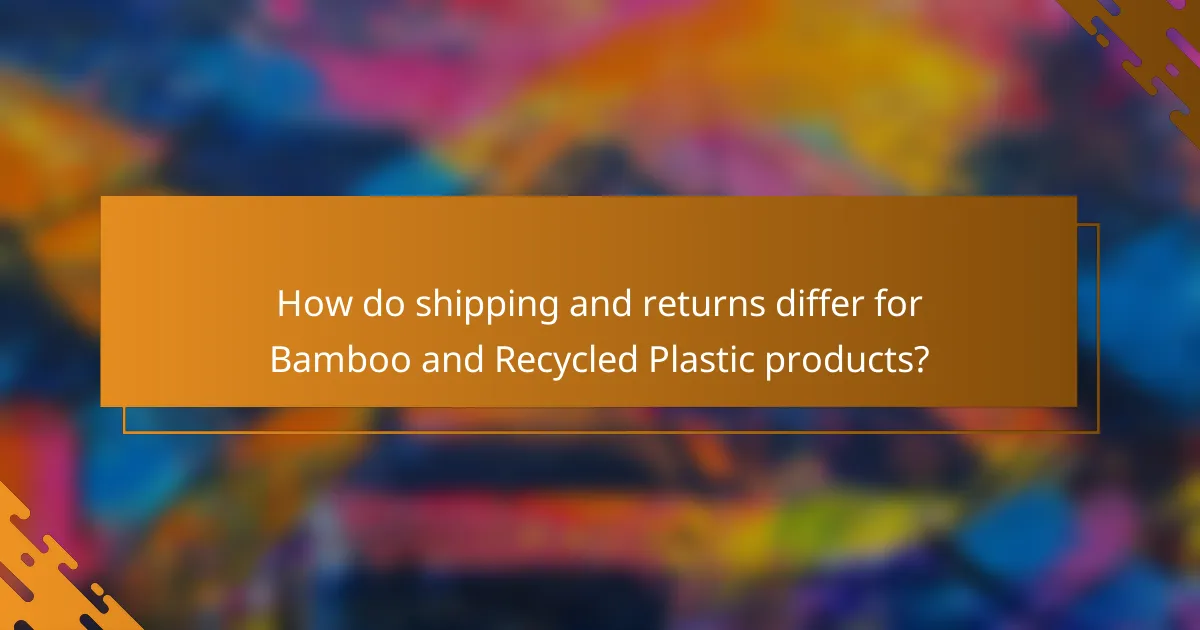
How do shipping and returns differ for Bamboo and Recycled Plastic products?
Shipping and returns for bamboo and recycled plastic products vary significantly due to their weight, material properties, and associated costs. Bamboo products typically incur higher shipping expenses, while recycled plastic items are often lighter and more economical to transport.
Bamboo products may have higher shipping costs
Bamboo products are generally heavier and bulkier, leading to increased shipping costs. The density of bamboo means that shipping companies may charge more based on weight and volume, especially for larger items like furniture or decor.
Additionally, shipping bamboo products may involve specific handling requirements due to their natural composition. This can further elevate costs, particularly if the products need special packaging to prevent damage during transit.
Recycled plastic products are often lighter and cheaper to ship
Recycled plastic products tend to be lighter than their bamboo counterparts, resulting in lower shipping fees. Their lightweight nature allows for more efficient transport, which can be a significant advantage for businesses looking to minimize logistics expenses.
Moreover, many recycled plastic items are designed for compact packaging, which can reduce shipping volume and costs even further. This efficiency makes recycled plastic a cost-effective choice for both manufacturers and consumers.
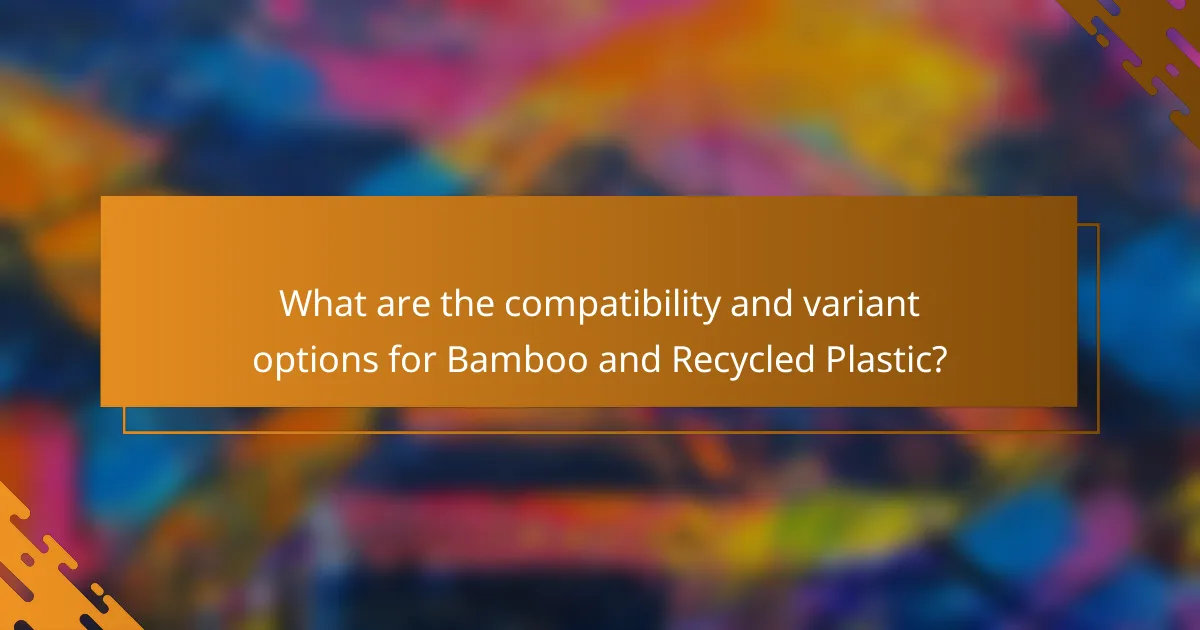
What are the compatibility and variant options for Bamboo and Recycled Plastic?
Bamboo and recycled plastic both offer a range of compatibility and variant options that cater to different needs and preferences. Bamboo is often chosen for its natural aesthetics and variety of finishes, while recycled plastic provides durability and a wide array of colors and designs.
Bamboo offers various finishes and styles
Bamboo can be processed into multiple finishes, including natural, stained, or painted options. These finishes allow it to blend seamlessly into various design themes, from rustic to modern. Additionally, bamboo products can come in different styles, such as solid planks, woven mats, or even intricate carvings.
When selecting bamboo, consider the intended use. For example, flooring may require a harder finish, while decorative items might benefit from a softer, more natural look. Always check for certifications like FSC (Forest Stewardship Council) to ensure sustainable sourcing.
Recycled plastic comes in multiple colors and designs
Recycled plastic is available in a vast palette of colors and designs, making it highly versatile for various applications. From vibrant hues to earth tones, recycled plastic can mimic the appearance of wood or stone, giving it an edge in aesthetic flexibility. This adaptability makes it suitable for outdoor furniture, playground equipment, and garden decor.
When choosing recycled plastic, look for products that specify the percentage of recycled content and any certifications, such as those from the EPA (Environmental Protection Agency). This ensures that you are selecting high-quality materials that contribute positively to sustainability efforts.
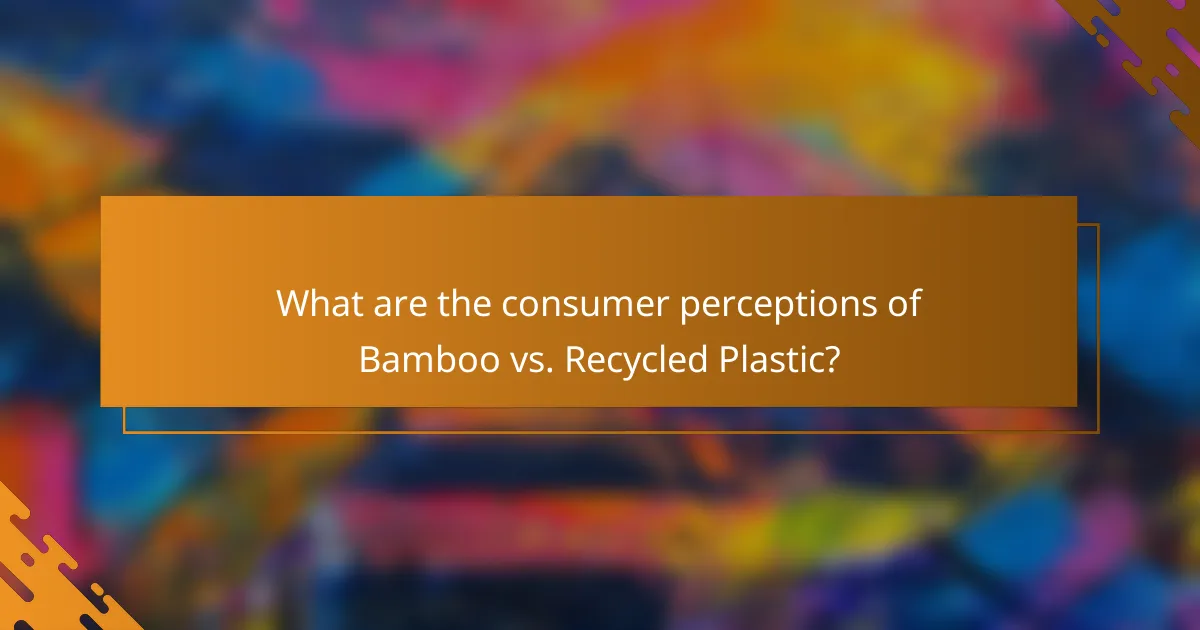
What are the consumer perceptions of Bamboo vs. Recycled Plastic?
Consumers generally perceive bamboo as an eco-friendly and premium option, while recycled plastic is often seen as a practical and sustainable choice. These perceptions influence purchasing decisions based on environmental impact, cost, and versatility.
Bamboo is often viewed as eco-friendly and premium
Bamboo is frequently associated with sustainability due to its rapid growth and minimal resource requirements. This perception positions bamboo products as premium items, appealing to consumers who prioritize environmental responsibility in their purchases.
However, the premium pricing of bamboo products can be a barrier for some consumers. While bamboo items may be marketed as high-quality, potential buyers should consider their budget and the long-term value of investing in such products.
Recycled plastic is seen as practical and sustainable
Recycled plastic is often viewed as a practical choice, especially for everyday items like containers and outdoor furniture. Its durability and low maintenance make it appealing to consumers looking for functional and sustainable solutions.
Moreover, the cost-effectiveness of recycled plastic can attract budget-conscious buyers. While it may not carry the same premium image as bamboo, its widespread availability and versatility in various applications make it a popular option for many consumers.
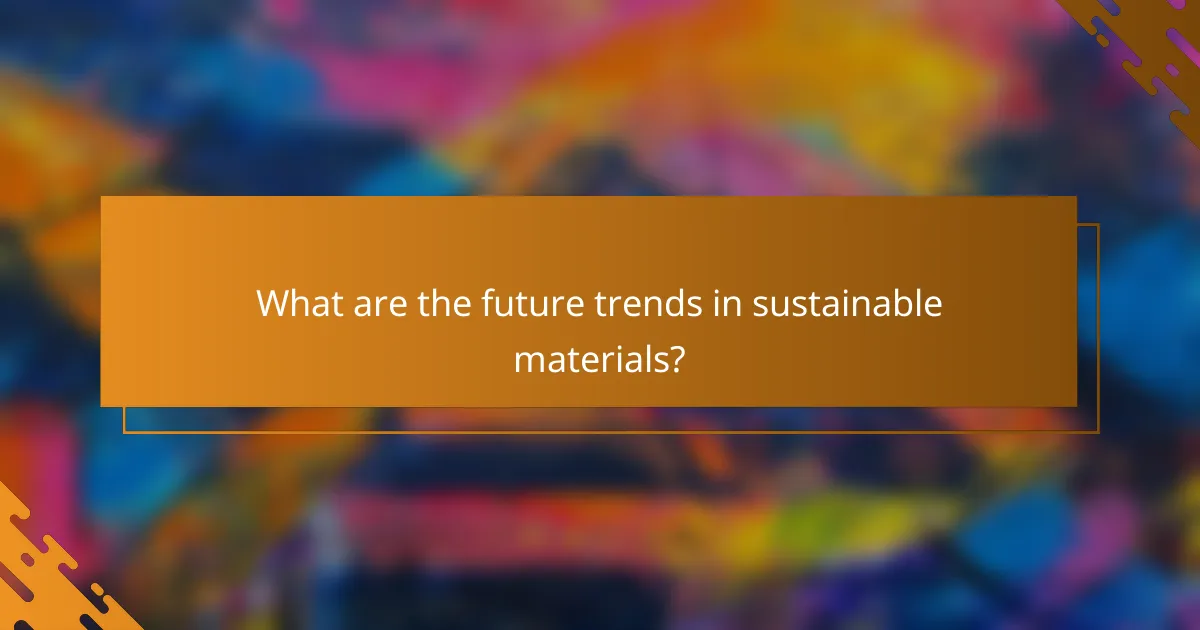
What are the future trends in sustainable materials?
The future of sustainable materials is leaning towards innovative solutions that combine environmental responsibility with practicality. Trends indicate a shift towards hybrid materials and products designed for a circular economy, reflecting a growing awareness of sustainability in consumer choices.
Growing interest in hybrid materials
Hybrid materials, which blend natural and synthetic components, are gaining traction due to their enhanced performance and sustainability. For example, combining bamboo fibers with recycled plastics can create durable products that maintain the eco-friendly attributes of both materials.
This trend is driven by the need for materials that offer both versatility and lower environmental impact. Industries such as construction and consumer goods are exploring these combinations to meet stricter regulations and consumer demand for greener options.
Increased demand for circular economy products
The circular economy emphasizes reusing and recycling materials to minimize waste, and there is a rising demand for products that embody these principles. Consumers are increasingly seeking items made from recycled materials, such as furniture crafted from reclaimed wood or packaging made from recycled plastics.
Companies are responding by designing products that are easier to recycle or repurpose, which can lead to cost savings in materials and production. For instance, brands that incorporate post-consumer recycled content in their products often find a competitive edge in the market, appealing to environmentally conscious consumers.

